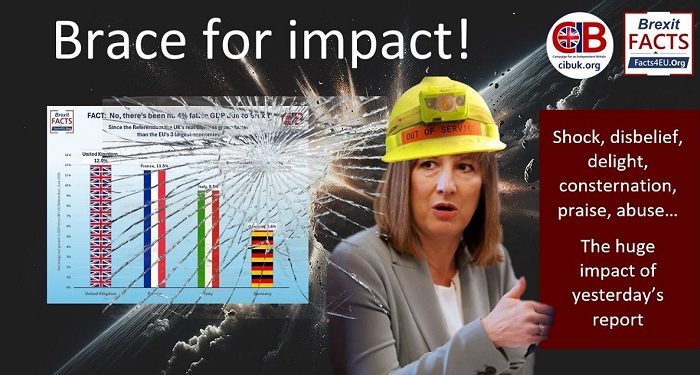Migration, the deficit and the recovery
 One of the matters I raised at a meeting in the House of Commons on Tuesday 16th December was:
One of the matters I raised at a meeting in the House of Commons on Tuesday 16th December was:
The effects of mass immigration are now so large
that they are impacting on the economy as a whole and, specifically,
on the deficit, the debt and the ‘recovery’
The ‘Recovery’ and the Deficit are linked
– The import of a large migrant workforce has inevitably added to total GDP so nearly one per cent of growth of total GDP p.a. can be put down to simply having more workers and consumers. Those enthusing over the ‘recovery’ should be aware of this.
It is standard economic theory that immigration transfers income from newly plentiful factors to newly scarce factors, that is, from labour to capital. What is not noticed, however, is that much capital in the UK is now foreign owned so the transfer also is in part from British workers to foreign capitalists. Foreign capitalists get dividends and capital gains tax free. Moreover, due to the tax regimes in Ireland and Juncker’s Luxembourg, a great deal of foreign corporations’ profits in the UK are, effectively, lost to the British tax system under ‘freedom of capital’.
– The way the tax system for workers is now set up means that low earners (and migrants are overwhelming so) pay little tax and actually get tax refunds. Additionally, of course, they place demand on the existing ‘public services’ such as schools, hospitals, etc.
– Further out there are plans and projects for more public capital spending on transport, housing, schools, etc., as well as, unseen, capital diversion to provide the private sector tools and assets that migrants require: factories, office blocks, shops, houses, etc.
It should be noted that there is a great difference between employing existing natives who already have their ‘social capital; in the form of housing, roads, dams, etc., and migrant workers who require equipping with appropriate capital items from the ground up. The capital both extra native and migrant workers need (and this need is common) is for ‘the tools of production’: factories, equipment, office buildings, etc.
– The electorate are aware, even if the political class is not, that migrants send much of their savings abroad. There is no proper counting of this; it all relies on Office of National Statistics (ONS) speculation and guesstimates as is admitted, but it is several billion pounds a year.
In any case annual savings by migrant workers or their employers are far too small to provide the capital they require to operate and live in the British economy (less than 1% p.a.). This phenomenon means that the capital to equip migrants has to be found mainly by natives either by taxation or by capital diversion.
– All of this means, therefore, there must be appropriation from the taxpayer to fund extra current expenditure and the extra capital requirements of the public sector. These expenditures count as GDP growth but, of course, do nothing for the incomes and wealth of native workers. Actually they reduce both.
– Therefore, the ‘recovery’ with high inward migration may mean a statistical increase in aggregate GDP but produces little tax revenue either from workers or capitalists and places extra demand on public sector investment and current spending on the public services. Migration also diverts capital investment from natives to equipping migrants by the process of capitalists re-ranking the profitability of investments as the economy changes shape. In this way capital intensification is reduced for native workers; therefore reducing their income. It is not just the political catchphrase, ‘pressure on the public services’, it is pressure on the private sector and on capital formation. Instead of capital intensification for natives, there is capital diversion to equip and supply migrants.
– By not taking strong steps to rein in migration, the government is making its task of reducing the deficit much harder to achieve and makes the ‘recovery’ a statistical mirage with little effect on native income. It also is deceiving itself, as much ‘capital investment’ adding to GDP statistics is simply a means of equipping more workers in the economy.
When considering the ‘recovery’, it is also worth noting that the GDP deflator has been rebased and effectively reduced since 2008. A reduction in the GDP deflator means that ‘real GDP’ is statistically increased. Thus a further part of the ‘recovery’ is also a statistical mirage.
Another point on the GDP deflator is that the fall in crude oil prices will, for about a year, mean a higher GDP deflator as price falls in imports add to the GDP deflator and, therefore, increase the statistical overall ‘growth’ or real GDP and the ‘recovery’.
The Debt
– In addition to the massive increase in government debt, the off balance sheet liabilities for state pensions and healthcare are mushrooming all the time and have not been recalculated since 2010. To enthuse over GDP growth, but not calculate off balance sheet liabilities, is living in a fool’s world.
Even the hoariest of all false factoids, that immigrants are needed to pay for British pensions, keeps returning. For example, in the New Statesman on 5th December 2014:
“There is a truth that no politician will utter: if Britain is to maintain a welfare state … its current economic model demands more immigration.”
Yet every study by the UN, OECD or the Home Office, has always come to the conclusion of Chris Shaw, the government actuary, writing in 2001:
“The single reason why even large constant net migration flows would not prevent support rates from falling in the long term is that migrants grow old as well.”
The UN calculates that, to maintain the UK worker/dependant ratio, the UK would have to support 60 million immigrants by 2050 and, by then, migration would be running at 2.2 million per annum, and increasing.
This is a dead-end in thinking.
– The accumulated, to date, off balance sheet liabilities for state old age pensions (not including public sector retirement pensions) were last calculated in 2010. They had then increased from £1.3 trillion in 2005 to £3.5 trillion in 2010 according to the Department of Work and Pensions. With the guaranteed 2.5% increase in pensions per annum, even in times of low inflation, the off balance sheet liabilities since then are increasing alarmingly. The fall in interest rates may also have a massive effect as the ONS states, “For example, reducing the discount rate to 4 per cent leads to a 31% increase in total pension entitlements (by £1,174 billion)”.
In 2010 the ONS used, in alignment with Eurostat, a rate of 5 per cent (nominal) for its discount. The rate is based on high quality corporate bonds yield. Rough calculations are that discount rates for corporate bonds are now in the region of 3.5 per cent. This means that the off balance sheet liabilities for state pensions at 2010 have risen to the area of £5.3 trillion – and this does not make any provision for the rises since 2010 or those built into the Coalitions’ pension promises.
Quite evidently, pension promises are quite out of control. Adding more lower paid migrants is adding to the liabilities with little contribution to the costs.
The Future
One can therefore forecast that:
- Capital employed per head will be static or reduce
- Native incomes will remain static at best.
- The ‘recovery’ will only partially reduce the deficit.
- Taxes on capital and labour will fall short of projections.
- The deficit will persist.
- Debt and off balance sheet liabilities will continue to mushroom.









